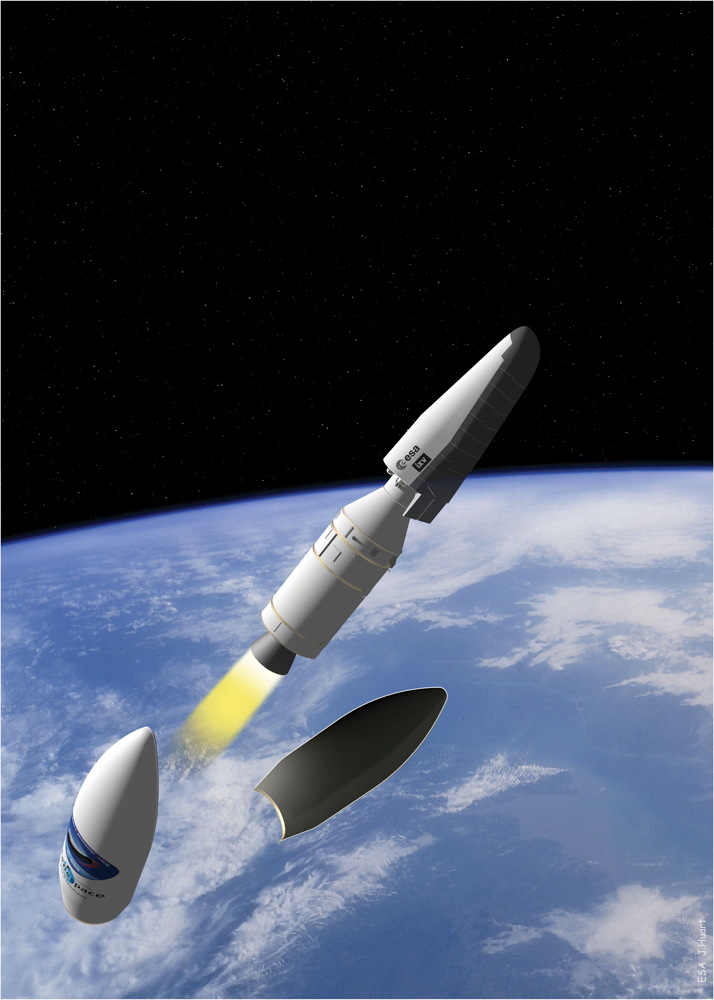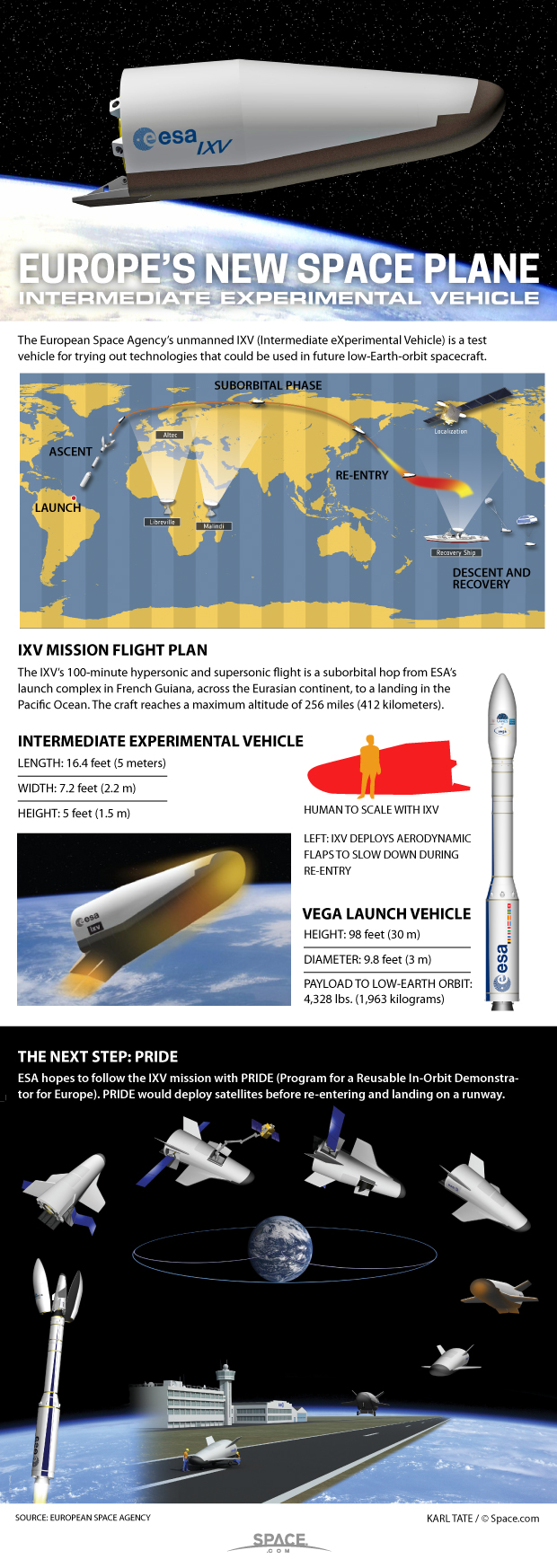Europe's Experimental Mini-Space Shuttle to Launch Wednesday

The European Space Agency (ESA) plans to launch an experimental space plane this Wednesday to test out technologies needed for vehicles to survive the return to Earth from space.
The unmanned space plane, called the Intermediate eXperimental Vehicle (IXV), is slated to blast off Wednesday (Feb. 11) at 8 a.m. EST (1300 GMT) from French Guiana. Its suborbital flight will last 100 minutes. But first, the reusable spacecraft must separate from the rocket by itself while out of contact with Earth. (You can watch the IXV liftoff live here on Space.com, courtesy of ESA.)
"The crucial moments will certainly be those after the blackout phase … The signal from the vehicle after this phase will be an important sign," Giorgio Tumino, ESA's project manager for IXV, told Space.com via email. [Photos: Europe's IXV Reusable Space Plane Prototype]
"The telemetry reception after the blackout will be an important contribution to the mission's success," Tumino added. "An important moment after that will also be the correct deployment of the parachute, since several missions worldwide failed this phase."
If everything goes according to plan, the 16.4-foot-long (5 meters) IXV space plane will detach autonomously from its Vega rocket at an altitude of roughly 200 miles (320 kilometers). It will soar as high as 280 miles (450 km) and then come back to Earth for a parachute-assisted splashdown in the Pacific Ocean.
IXV was originally supposed to launch in November, but the mission was postponed to perform additional safety analyses of the mission's launch trajectory. (Vega rockets usually launch northward to send payloards into a polar orbit, but the IXV's Vega will head eastward on a suborbital path, ESA officials said.)
Space planes are not a new concept for ESA. In the 1980s, the agency was developing a small space-shuttle-like craft called Hermes to bring up to three astronauts into space at a time.
Breaking space news, the latest updates on rocket launches, skywatching events and more!
Hermes managers added safety precautions, such as ejection seats, to the vehicle's design after NASA's Challenger space shuttle exploded during launch in January 1986, ESA officials have said. But the added cost and complication eventually led to the Hermes program's cancellation in 1992.
"[IXV] is a completely new program, although it builds also on technological work done during the Hermes period," Tumino said. "An example is the thermal protection system, whose first elements were developed in the frame of the Hermes program."
Re-entry study could be useful for multiple applications, he added. Some possibilities include missions returning from other planets, or creating reusable rocket stages.
ESA aims to follow the IXV mission with another unmanned space-plane project called PRIDE (Program for Reusable In-Orbit Demonstrator for Europe), which would deploy satellites in orbit before returning to Earth for a runway landing.
ESA is also studying re-entry of one of its International Space Station cargo vehicles that is expected to return from space Feb. 27, bearing a load of trash. The Automated Transfer Vehicle-5, which is named after the late Belgian astronomer and physicist Georges Lemaitre, harbors internal sensors to track the vehicle's behavior during re-entry, when it is designed to break apart and burn up.
Follow Elizabeth Howell @howellspace, or Space.com @Spacedotcom. We're also on Facebook and Google+. Originally published on Space.com.

Elizabeth Howell (she/her), Ph.D., was a staff writer in the spaceflight channel between 2022 and 2024 specializing in Canadian space news. She was contributing writer for Space.com for 10 years from 2012 to 2024. Elizabeth's reporting includes multiple exclusives with the White House, leading world coverage about a lost-and-found space tomato on the International Space Station, witnessing five human spaceflight launches on two continents, flying parabolic, working inside a spacesuit, and participating in a simulated Mars mission. Her latest book, "Why Am I Taller?" (ECW Press, 2022) is co-written with astronaut Dave Williams.

